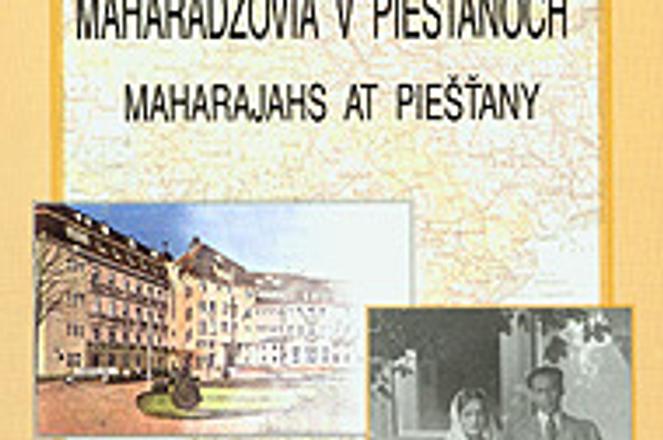HAVE a good read while taking a rest at the spa.
Maharajas at Piešťany
Written by:Andrej Bolerázsky
Published by:Balneological Museum, Piešťany
Price: Sk140
Available: www.balneomuzeum.sk (Piešťany spa)
A NON-FICTION book on the visits to Piešťany by the maharajahs of India in the 1930s may seem too specialized a topic to merit the general reader's interest. However, this short, bilingual work is more than a chronicle of events. It provides a surprisingly detailed historical overview of the spa's development, gives insight into local customs and the rule of the maharajas through absorbing anecdotes, and functions as an account of a still-developing cross-cultural relationship.
The healing thermal waters of the Piešťany spa have long held world renown. Ailing visitors have flocked to the spa since at least the 16th century, drawing locals and foreigners in the times of Great Hungary, the Austro-Hungarian empire, Czechoslovakia and now the Slovak Republic.
Nevertheless, as Maharajas at Piešťany records, real facilities for visitors were not constructed till the end of the 18th century, when the first stone building was built in 1805.
József Erdödy, the spa's then-owner, had this building equipped with a large pool and tiled floor called the "mirror pool" because it reflected rather than absorbed light, as the mud floors constructed up to that day did. Today, the building is known as the Napoleon III spa.
The book mainly concerns the visits of Indian maharajas during the spa's heyday in the mid-1930s. By that time Piešťany had become one of the premier European spa resorts. Over the years visitors included President Eduard Beneš and his wife, the composer Franz Lehár, American film star Lillian Gish, and British historian and defender of the Slovaks, Seton Watson.
However, it was the visits of the maharajas in the 1930s that led to Piešťany's worldwide reputation, which it retains to this day. The first of these was the ruler of Hyderabad, Maharaja Salar Jung III (1889-1948), who came to the Slovak spa for treatment on a sore shoulder. He was received as an honoured guest and was by all accounts more than satisfied with the therapy and the reception.
Two incidents stand out from the visit. The first is that during folk-dancing demonstrations in the nearby village of Trebatice, the "Nawab" (as maharajas were commonly known) allowed himself to be whipped by the young ladies of the troupe. When handed a whip with which to defend himself, the Nawab was lashed even more enthusiastically. This caused a sensation in the press, as in India even flies were stopped from touching a maharaja.
It is clear that the Nawab, like many subsequent foreign visitors, took a liking to the local girls. Rumour has it that during a visit by a local art dealer to the Thermia Palace, where the royal personage was residing, the dealer's daughter caught the Indian ruler's eye and he proposed marriage. The girl's parents refused.
Another story relating to the art dealer centres around the authenticity of a painting said to have been by Rubens. The Nawab was interested in purchasing it and wanted it authenticated. Art experts from Vienna were brought in, but the painting was discovered to be a Van Dyck. The Nawab decided not to buy and when he also refused to pay the Sk20,000 authentication fee, the dealer harassed him through his lawyer and threatened to have his passport confiscated.
Maharajas at Piešťany goes on to chronicle visits by other maharajas and the excitement they caused amongst the locals. There are many interesting period photographs of the Indian royal visitors in Piešťany. The dignified figures in their suits and hats, the open-topped limousines that carried them and the beautiful buildings in the background remind us of what Czechoslovakia was at the time - a highly-developed, comparatively wealthy, European country.
The 142-page book is written in English and Slovak. The English translation is without grammar or typing errors.
Author: Roderick Pritchard-Smith


